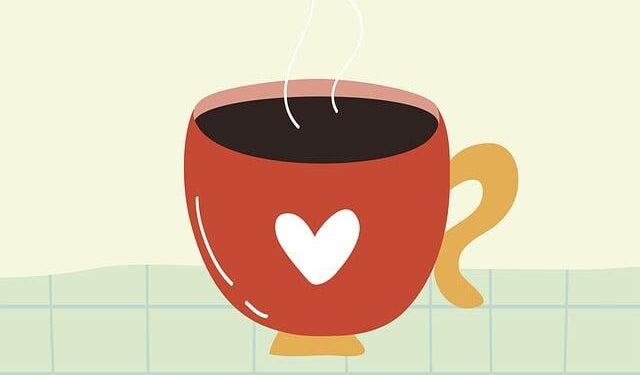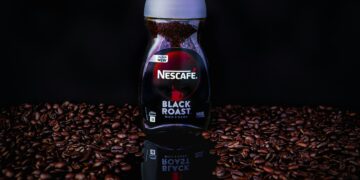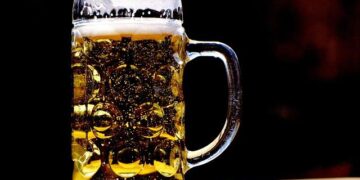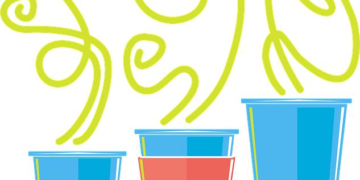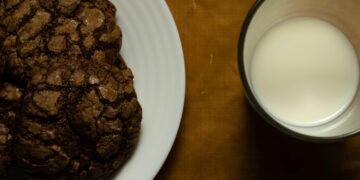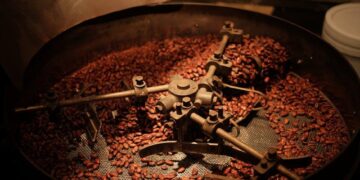Table of Contents
I. Introduction: The Redline Brand and Its Market Proposition
Vital Pharmaceuticals, Inc. (VPX), the company also responsible for the popular Bang Energy line, established its Redline brand in 1993 with a stated mission to produce “the highest-grade, university proven sports nutrition supplements and performance beverages in the world”.1
The Redline product portfolio, particularly its ready-to-drink (RTD) offerings, has been aggressively marketed to a demographic seeking significant physiological enhancement.
Products like Redline Xtreme are positioned as scientifically advanced tools for consumers ranging from high-performance athletes to gamers, promising to “enhance energy and performance while improving mental focus”.2
The manufacturer’s marketing narrative is built upon a foundation of scientific legitimacy.
VPX has claimed it is one of the “few companies that has the bragging right to back up that our products work,” citing seven university studies as evidence.3
These studies are purported to demonstrate remarkable benefits from consuming Redline Xtreme, including a 7.5% improvement in reaction time, a 13% increase in energy, and a 15% improvement in focus.3
The beverages are also promoted as pre-workout supplements and “fat burners” that deliver potent energy without the subsequent “sugar-induced energy crash” common to other energy drinks.2
This carefully constructed image of a safe, effective, and scientifically validated performance beverage stands in stark contrast to a documented history of severe consumer safety issues and legal challenges.
Vital Pharmaceuticals has been the subject of multiple class-action lawsuits directly related to the Redline product line.6
One such lawsuit, filed by plaintiff Adam Mirabella, alleges that after consuming a single serving of Redline Xtreme, he was hospitalized with symptoms that “resembled a cocaine overdose,” including a racing heart, extreme chest pain that felt like a heart attack, loss of sensation in his hands, and extreme nausea.8
An earlier class-action complaint claimed the drinks could induce “vomiting, chest pains, rapid heartbeat, convulsions, and ‘possibly death'”.6
These legal actions, supported by numerous anecdotal consumer reports of similar adverse events, reveal a profound disconnect between the product’s marketing and its real-world physiological impact.8
The central conflict surrounding the Redline brand is not merely an issue of an isolated product flaw, but rather points to a systemic strategy that leverages claims of scientific validation to market a product whose formulation and labeling present a significant risk to public health.
The “bragging rights” associated with university studies create a powerful halo effect, suggesting a level of safety and efficacy that may persuade consumers to overlook or underestimate the product’s inherent dangers.
This perception of a safe yet potent supplement is shattered upon a critical examination of the product’s ingredient list, its deliberately ambiguous labeling, and the extensive health warnings printed on its own packaging.9
The chasm between the marketing narrative and the documented harm suggests a business model that prioritizes market penetration over consumer safety, exploiting a regulatory environment that allows such high-risk products to be sold with minimal oversight.
II. Deconstructing the Caffeine Content: An Analysis of Misleading Labeling
A fundamental point of confusion and concern regarding Redline energy drinks is the precise amount of caffeine they contain.
An analysis of publicly available product information reveals two starkly different figures, a discrepancy that is not an error but the result of a deliberate and misleading labeling strategy centered on the manufacturer’s definition of a “serving size.”
The Conflicting Data Points
On one hand, numerous product labels and online retail descriptions for Redline Xtreme explicitly state that “One serving of Redline Xtreme provides 158 mg of caffeine”.9
This same figure is provided for the standard Redline RTD product.13
To contextualize this dose and mitigate perceived risk, this claim is often accompanied by the reassuring comparison that this amount is “less than two cups of coffee”.5
On the other hand, independent analyses, caffeine-focused databases, and some retail product descriptions report a much higher figure: a single 8 fl oz (240 mL) bottle of Redline Xtreme contains 316 mg of caffeine.2
This quantity places Redline Xtreme among the most highly caffeinated energy drinks on the market, with a caffeine concentration of 39.5 mg per fluid ounce.4
Resolving the Discrepancy: The Serving Size Deception
The source of this significant discrepancy is revealed in the product’s own Nutrition Facts panel.
The manufacturer defines the “Serving Size” as 120 mL, or 4 fl oz.
The panel further states that there are “2 Servings Per Container” in each 8 fl oz bottle.9
Therefore, the widely advertised 158 mg of caffeine anhydrous is the amount
per 4 oz serving.12
Consequently, consuming the entire 8 fl oz bottle—a single, resealable unit—results in the ingestion of two servings, for a total caffeine load of 316 mg.
While the label carries an advisory to “Always begin use with a one-quarter bottle (2 oz) of Redline Xtreme daily to assess tolerance” and to “Never exceed more than 4 ounces per serving,” the product’s format as a ready-to-drink beverage makes consumption of the entire container in a single session a common and entirely foreseeable use pattern.2
This issue was explicitly raised in a class-action lawsuit, which noted that the drinks are sold in containers that “cause most drinkers to unwittingly consume a double dose”.6
This practice of using a manipulated serving size to understate the total stimulant load of a single-unit product represents a form of weaponized labeling.
It technically complies with the letter of food labeling regulations but fundamentally violates their spirit, which is to provide clear and unambiguous information to help consumers make safe choices.
This strategy creates a significant public health risk by fostering a false sense of security.
A consumer, seeing “158 mg” on the label, might reasonably believe they are consuming a dose comparable to a large cup of coffee.
In reality, by finishing the bottle, they are ingesting 316 mg of caffeine, an amount that approaches the U.S. Food and Drug Administration’s (FDA) entire recommended daily limit of 400 mg for a healthy adult.16
This engineered deception exposes a critical gap in supplement regulation, where packaging and labeling conventions can be exploited to mislead consumers about a product’s true potency and risk.
The following table provides a clear breakdown of the caffeine content in Redline products, illustrating how the serving size definition obscures the total dose per container.
Table 1: Redline Caffeine Content Analysis
| Product Name | Container Size (fl oz) | Serving Size (fl oz) | Servings per Container | Caffeine per Serving (mg) | Total Caffeine per Container (mg) | Caffeine Concentration (mg/fl oz) |
| Redline Xtreme | 8 | 4 | 2 | 158 | 316 | 39.5 |
| Redline RTD (Original) | 8 | 4 | 2 | 158 | 316 | 39.5 |
Data compiled from sources.2
III. Beyond Caffeine: A Pharmacological Review of Redline’s Proprietary Blend
The significant health risks associated with Redline energy drinks are not attributable to caffeine alone.
The product’s formulation includes a “Proprietary Blend” of numerous other pharmacologically active compounds, the precise quantities of which are not disclosed to the consumer.
This cocktail of ingredients can interact synergistically, amplifying the stimulant effects and contributing to the severe adverse events reported by users.
The Proprietary Blend Ingredients
An examination of various Redline product labels reveals a complex mixture of ingredients within its proprietary blend.
Key compounds identified include Beta-Alanine, the branched-chain amino acids (BCAAs) L-Leucine, L-Valine, and L-Isoleucine, N-Acetyl-L-Tyrosine, Yohimbe (Coryanthe yohimbe) bark extract (standardized for yohimbine HCl), Evodia (Evodiae fructus) fruit extract (standardized for evodiamine), Yerba Mate (Ilex paraguariensis) leaf extract, 5-HTP (5-Hydroxytryptophan), vinpocetine, green tea extract, N-Methyl Tyramine, B-Phenylethylamine HCl, and Toothed Clubmoss (Huperzia serrata) extract (standardized for Huperzine A).6
A class-action complaint specifically identified several of these—including anhydrous caffeine, evodiamine, tyrosine, yerba mate extract, green tea extract, 5-HTP, vinpocetine, and yohimbine—as “dangerous substances” that “have not been adequately studied”.6
Analysis of Key Components
A pharmacological review of the most potent ingredients in this blend reveals a high potential for adverse effects, particularly when combined with a 316 mg dose of caffeine.
- Yohimbe (Yohimbine HCl): This is arguably the most concerning ingredient in the blend. Yohimbine is a potent indole alkaloid and an alpha-2 adrenergic receptor antagonist. By blocking these receptors, it increases the release of norepinephrine, a key neurotransmitter in the “fight or flight” response. This action can lead to significant increases in heart rate and blood pressure, and it is known to cause anxiety, agitation, panic attacks, and dizziness. The combination of yohimbine with a high dose of caffeine creates a powerful synergistic effect on the cardiovascular system. Both substances promote sympathomimetic activity through different mechanisms, subjecting the heart and vasculature to a multi-pronged assault that dramatically increases the risk of tachycardia, hypertension, and potentially life-threatening arrhythmias.
- Yerba Mate and Green Tea Extracts: These plant-based extracts are themselves natural sources of caffeine, as well as other methylxanthine stimulants like theobromine and theophylline. Their inclusion means the total stimulant load of Redline is likely even higher than the 316 mg of caffeine anhydrous listed on the label. This practice of using botanical extracts containing “hidden” caffeine is a known issue in the energy drink industry that complicates risk assessment.18
- Beta-Alanine: This amino acid is a precursor to carnosine and is included in many pre-workout supplements. Its most well-known side effect is paresthesia, a harmless but often intense tingling or flushing sensation on the skin. While not dangerous in itself, it contributes to the product’s overall feeling of intensity.
- Toothed Clubmoss (Huperzine A): This compound is a potent and reversible acetylcholinesterase inhibitor. By preventing the breakdown of the neurotransmitter acetylcholine, it can enhance cognitive functions like focus and memory. However, it also carries a range of potential side effects and can interact with numerous medications.
- Other Bioactive Compounds: The blend contains several other substances like evodiamine, 5-HTP, and B-Phenylethylamine HCl, which have various purported effects on thermogenesis, mood, and neurological function. The safety profile of these compounds, especially when consumed as part of a high-stimulant cocktail, is not well-established.
The use of a “proprietary blend” serves as a shield, preventing consumers and healthcare professionals from knowing the exact dosage of each active ingredient.
For Redline Xtreme, the total weight of this blend is listed as 657 mg per 4 oz serving.15
It is impossible to determine how much of that weight is composed of the relatively benign BCAAs versus the highly potent yohimbine.
This lack of transparency is a critical feature that prevents any meaningful risk assessment.
The true danger of Redline lies not just in its high caffeine content, but in the unpredictable and powerful synergistic toxicity of this caffeine with a hidden cocktail of other stimulants.
The resulting physiological stress can produce symptoms consistent with an acute sympathomimetic toxidrome, a state of extreme nervous system stimulation that aligns with the “cocaine overdose” description in legal filings.8
IV. Documented Health Consequences: From Adverse Events to Class Action Lawsuits
The pharmacological risks inherent in Redline’s formulation are not merely theoretical.
A substantial body of evidence, from consumer reports and legal filings to the broader medical literature, demonstrates a clear and consistent pattern of severe adverse health events associated with the product’s consumption.
Legal Challenges and Consumer Reports
Vital Pharmaceuticals has faced significant legal action over the safety of its Redline products.
A 2009 class-action lawsuit alleged that the drinks were dangerous and could lead to severe outcomes including “vomiting, chest pains, rapid heartbeat, convulsions, and ‘possibly death'”.6
More recently, the lawsuit filed by Adam Mirabella provided a detailed account of acute toxicity following the consumption of Redline Xtreme, describing symptoms of a racing heart, “extreme chest pain that felt like a heart attack,” and nausea.8
These formal legal complaints are echoed by a multitude of informal consumer reports.
Individuals have described frightening experiences after drinking the product, including “chest pains(rapid heart rate ) stomach problems and very bad headache” and feeling as though they were “overdosing body was shaking my heart was beating I was dizzy”.8
These accounts paint a picture of a product capable of inducing acute physiological distress that far exceeds the jitteriness associated with a strong cup of coffee.
Corroboration in Medical Literature
The symptoms reported by Redline consumers align precisely with the known risks of high-potency energy drinks documented in medical and scientific literature.
A 2017 review article in Journal of Headache and Pain noted that caffeinated energy drinks are associated with intoxication characterized by “nausea/vomiting, tachycardia, hypertension, agitation, and dizziness,” and have been linked to severe neurological events like “seizures [and] stroke” and, in rare cases, “death”.19
A comprehensive 2023 review in
Nutrients further underscores that energy drinks can exert “deleterious effects on a broad spectrum of bodily organs,” potentially culminating in severe outcomes like rhabdomyolysis (muscle breakdown), acute kidney injury, and dangerous ventricular arrhythmias.20
Numerous case studies have linked the consumption of energy drinks, even in young and otherwise healthy individuals, to life-threatening cardiovascular events, including sudden cardiac arrest, myocardial infarction (heart attack), and aortic dissection.20
The risk is known to be exacerbated when these drinks are mixed with alcohol, a common practice among young adults that has been linked to increased alcohol-related harm and high-risk behaviors.18
The Manufacturer’s Acknowledgment of Risk
Perhaps the most compelling evidence of the product’s potential for harm comes from the manufacturer’s own warning label.
The packaging for Redline Xtreme carries an extensive list of warnings and contraindications.
It explicitly warns against use by individuals with a family history of heart disease, thyroid disease, high blood pressure, diabetes, glaucoma, seizure disorder, or psychiatric conditions.9
Crucially, it instructs consumers to “Discontinue use and call a physician…
immediately if you experience rapid heartbeat, dizziness, severe headache, shortness of breath, or other similar symptoms”.9
This list of warnings functions as a de facto acknowledgment of the product’s known risks.
The adverse events that consumers are warned about are the very same ones cited in lawsuits and reported in medical case studies.
This demonstrates that the severe reactions are not unforeseeable or anomalous; rather, they are the predictable physiological outcomes of consuming a product with this specific pharmacological profile.
There is a direct and unbroken causal chain from the product’s ingredients (high-dose caffeine plus synergistic stimulants like yohimbine) to the predicted physiological response (severe sympathomimetic stimulation) to the actual reported harms (“racing heart,” “extreme chest pain”).
The existence of the warning label, rather than absolving the manufacturer of responsibility, confirms their awareness of these predictable dangers and raises profound ethical questions about the decision to market such a high-risk product to the general public.
V. Risk Profile in the Context of Public Health Guidelines
To fully appreciate the extreme nature of Redline Xtreme, its stimulant load must be evaluated against established public health guidelines for caffeine consumption.
This comparison reveals a product engineered to deliver a dose that places consumers, particularly vulnerable populations, at significant risk.
FDA Guidelines and High-Risk Populations
The U.S. Food and Drug Administration (FDA) has cited 400 milligrams of caffeine per day as an amount generally not associated with dangerous, negative effects for most healthy adults.16
A single 8 fl oz bottle of Redline Xtreme, containing
316 mg of caffeine, delivers approximately 79% of this entire daily limit in one sitting.
This leaves very little room for any other sources of caffeine, such as coffee, tea, or soda, throughout the day.
The risk is magnified for adolescents.
The American Academy of Pediatrics suggests that adolescents aged 12 to 18 should limit caffeine intake to no more than 100 mg per day.21
A single bottle of Redline Xtreme contains more than
three times this recommended daily maximum.
This aligns with the firm position of the American Academy of Pediatrics and the American Academy of Family Physicians that the stimulants in energy drinks “have no place in the diet of children and adolescents”.18
Furthermore, the FDA acknowledges that there is wide variation in how sensitive people are to caffeine’s effects, with factors like body weight, underlying health conditions, and medication use significantly altering an individual’s safe threshold.16
The product’s own label warns against its use by a vast segment of the population, including those with high or low blood pressure, cardiac arrhythmia, stroke, heart, liver, kidney, or thyroid disease, seizure disorders, and psychiatric conditions.10
Medical experts similarly advise that individuals with conditions like GERD, heart disease, severe anxiety, and those who are pregnant should avoid high-caffeine products entirely.23
Proximity to Toxic Doses
While a single bottle is below the dose of approximately 1,200 mg at which acute toxic effects like seizures are typically observed, the presence of synergistic compounds like yohimbine means that severe adverse effects could occur at a much lower total caffeine dose than with caffeine alone.25
The product’s marketing toward intense, prolonged activities like gaming or workouts could also encourage repeat consumption, pushing the total intake into a dangerous zone.
The design and distribution of Redline Xtreme present a clear public health hazard.
This is not simply a “strong” beverage; it is a product engineered to exist at the very precipice of the accepted daily health limit for a healthy, caffeine-tolerant adult, while catastrophically exceeding the limit for adolescents.
Its widespread availability in common retail outlets like gas stations and grocery stores is grossly misaligned with its high-risk pharmacological profile.3
This model places the entire burden of risk assessment on the consumer, who is armed with misleading labeling (“158 mg per serving”) and is highly unlikely to understand the complex synergistic risks posed by the proprietary blend.
This creates a dangerous mismatch between the product’s extreme potency and its unrestricted accessibility, treating a substance that requires careful pharmacological consideration as if it were a standard consumer beverage.
VI. Comparative Analysis: Redline’s Stimulant Load vs. Market Alternatives
Situating Redline Xtreme’s caffeine content within the broader landscape of caffeinated beverages provides critical context and numerically demonstrates its status as an outlier at the extreme end of the market.
Redline vs. Other Energy Drinks
With 316 mg of caffeine in an 8 fl oz bottle, Redline Xtreme is consistently ranked as one of the most potent energy drinks available.4
Its caffeine concentration of 39.5 mg/fl oz is exceptionally high.
For comparison, popular high-stimulant competitors like Bang Energy and Reign Total Body Fuel contain 300 mg of caffeine, but in a much larger 16 fl oz can (a concentration of 18.75 mg/fl oz).4
Redline Xtreme delivers a larger dose in half the volume.
Its caffeine content vastly exceeds that of mainstream energy drinks like Monster Energy (160 mg per 16 fl oz) and Red Bull (80 mg per 8.4 fl oz).27
Redline vs. Coffee and Soda
The manufacturer’s claim that a 4 oz serving of Redline (158 mg) contains “less than two cups of coffee” is a carefully worded half-truth designed to mislead.9
While a standard 8 oz cup of brewed coffee contains approximately 95-175 mg of caffeine, a full bottle of Redline Xtreme (316 mg) is equivalent to roughly
three to four cups of standard coffee consumed at once.4
This is a massive dose delivered in a fraction of the time and volume required to drink several cups of coffee.
The comparison to sodas is even more dramatic.
A 12 oz can of Coca-Cola contains 34 mg of caffeine, while a Mountain Dew contains 55 mg.21
A single 8 fl oz bottle of Redline Xtreme contains the caffeine equivalent of approximately
nine cans of Coca-Cola or nearly six cans of Mountain Dew.
The following table provides an at-a-glance comparison of Redline Xtreme’s caffeine load against a wide spectrum of common beverages, reinforcing its extreme potency.
Table 2: Comparative Caffeine Content of Popular Beverages
| Beverage Category | Brand/Product | Serving Size (fl oz) | Caffeine per Serving (mg) | Caffeine Concentration (mg/fl oz) |
| Extreme Energy Drink | Redline Xtreme | 8 | 316 | 39.5 |
| Extreme Energy Drink | Spike Hardcore Energy | 8 | 350 | 43.8 |
| High-Potency Energy Drink | Bang Energy | 16 | 300 | 18.8 |
| High-Potency Energy Drink | Reign Total Body Fuel | 16 | 300 | 18.8 |
| Energy Shot | 5-hour Energy (Extra Strength) | 1.93 | 230 | 119.2 |
| Mainstream Energy Drink | Monster Energy | 16 | 160 | 10.0 |
| Mainstream Energy Drink | Red Bull | 8.4 | 80 | 9.5 |
| Coffee | Brewed, Drip (Average) | 8 | 95-175 | 11.9-21.9 |
| Coffee | Starbucks Coffee (Grande, 16 oz) | 16 | 310 | 19.4 |
| Coffee | Espresso (Single Shot) | 1 | 64 | 64.0 |
| Soda | Mountain Dew | 12 | 55 | 4.6 |
| Soda | Coca-Cola Classic | 12 | 34 | 2.8 |
Data compiled from sources.4
VII. Conclusion: A Synthesis of Findings and Public Health Recommendations
The evidence presented in this report leads to an unambiguous conclusion: Redline energy drinks, particularly the Xtreme variant, represent a significant and foreseeable public health risk.
This risk is not accidental but is the direct result of a multi-faceted product and marketing strategy by the manufacturer, Vital Pharmaceuticals.
This strategy combines three key elements: first, the use of misleading labeling that leverages regulatory loopholes in “serving size” definitions to obscure a massive 316 mg dose of caffeine in a single container; second, the formulation of a complex pharmacological cocktail that combines this high dose of caffeine with other potent and under-regulated stimulants like yohimbine within a non-transparent “proprietary blend,” creating a high potential for dangerous synergistic toxicity; and third, the use of aggressive marketing that promotes the product as a scientifically-validated performance enhancer, creating a misleading perception of safety that is directly contradicted by the product’s own extensive warning label and a documented history of severe adverse events.
The culmination of these factors is a product that is dangerously potent, deceptively labeled, and inappropriately marketed for widespread public consumption.
The severe adverse health events reported by consumers—including symptoms mimicking acute poisoning, extreme cardiovascular distress, and neurological disturbances—are not anomalous reactions.
They are the predictable physiological consequences of a product designed to deliver an extreme stimulant load.
Based on this comprehensive analysis, the following recommendations are offered.
Recommendations
- For Consumers: Extreme caution is strongly advised. Individuals must understand that the effective dose of a single 8 fl oz bottle of Redline Xtreme is 316 mg of caffeine, plus an unknown quantity of other powerful stimulants. Due to the presence of yohimbine and the catastrophic exceeding of adolescent daily limits, the product should be avoided entirely by individuals under 18, pregnant or nursing women, and anyone with a known or even suspected cardiovascular, neurological, or psychiatric condition. Healthy adults who choose to consume the product must recognize that a single bottle delivers nearly the entire recommended daily maximum dose of caffeine and should not be combined with other stimulant-containing products.
- For Healthcare Professionals: Clinicians should be aware of the extreme potency and complex formulation of products like Redline when evaluating patients presenting with symptoms of sympathomimetic toxidrome (e.g., tachycardia, hypertension, arrhythmia, anxiety, chest pain, or seizures). Inquiry about energy drink consumption, specifically high-potency brands like Redline, should be a routine part of the patient history in relevant clinical scenarios. The presence of yohimbine in the differential diagnosis may alter treatment strategies.
- For Regulatory Bodies (e.g., FDA): This case highlights critical and dangerous gaps in the regulation of dietary supplements and energy drinks. The following regulatory actions should be strongly considered to protect public health:
- Mandate Clear “Per Container” Labeling: For all single-unit, ready-to-drink beverages, regulations should mandate that the total caffeine and stimulant content for the entire container be displayed as prominently as any “per serving” information.
- Eliminate “Proprietary Blend” Obscurity: Require the quantitative disclosure of all pharmacologically active ingredients within proprietary blends, especially for compounds with known health risks and narrow therapeutic windows, such as yohimbine.
- Establish Caffeine Dose and Concentration Caps: Consider establishing a maximum permissible caffeine concentration (mg/fl oz) or a total caffeine cap for beverages sold as conventional foods or dietary supplements. This would prevent extreme products from being sold in mainstream retail channels without appropriate controls and warnings.
- Increase Scrutiny of Marketing Claims: Vigorously investigate marketing claims such as “university studied” and “scientifically proven” to ensure they are not being used to create a misleading perception of safety for products that are demonstrably high-risk.
Works cited
- Bang Energy | Hand Family Companies, accessed August 3, 2025, https://www.handfamilycompanies.com/bang-energy
- Buy VPX Redline Xtreme Energy Drink – Health Products For You, accessed August 3, 2025, https://www.healthproductsforyou.com/p-muscle-food-vpx-redline-xtreme.html
- Redline® Xtreme Triple Berry Energy Drink Multipack Bottles, 4 pk / 8 fl oz – Kroger, accessed August 3, 2025, https://www.kroger.com/p/redline-xtreme-triple-berry-energy-drink-multipack-bottles/0061076438901
- How Much Caffeine is in Redline Xtreme Energy Drink? 2025 …, accessed August 3, 2025, https://cornercoffeestore.com/how-much-caffeine-in-redline-xtreme-energy-drink/
- VPX Redline Xtreme RTD – Ultimate Energy Drink | Buy Online – GoSupps.com, accessed August 3, 2025, https://www.gosupps.com/vpx-redline-xtreme-rtd.html
- Class Calls Redline Energy Drinks Dangerous – Courthouse News Service, accessed August 3, 2025, https://www.courthousenews.com/class-calls-redline-energy-drinks-dangerous/
- VPX Redline Xtreme Energy Shot – Supplement City USA, accessed August 3, 2025, https://www.supplementcityusa.com/products/vpx-redline-xtreme
- Redline Energy Drink Class Action Lawsuit, accessed August 3, 2025, https://topclassactions.com/lawsuit-settlements/lawsuit-news/redline-energy-drink-class-action-lawsuit/
- VPX Redline Xtreme Triple Berry Ultimate Energy Rush Drink 4 PK …, accessed August 3, 2025, https://www.heb.com/product-detail/vpx-redline-xtreme-triple-berry-ultimate-energy-rush-drink-4-pk/1057536
- Redline Extreme Cotton Candy Energy Drink – Shop Sports … – H-E-B, accessed August 3, 2025, https://www.heb.com/product-detail/redline-extreme-cotton-candy-energy-drink/2101183
- www.heb.com, accessed August 3, 2025, https://www.heb.com/product-detail/redline-extreme-cotton-candy-energy-drink/2101183#:~:text=One%20serving%20of%20Redline%20Xtreme,or%20nursing%20or%20contemplating%20Pregnant.
- contains 2 servings – GNC, accessed August 3, 2025, https://www.gnc.com/on/demandware.static/-/Sites-GNC2-Library/default/v1608464630446/pdf/367185_lbl.pdf
- VPX Sports Redline Energy RTD Original Triple … – AllStarHealth.com, accessed August 3, 2025, https://www.allstarhealth.com/f/vpx_sports-redline_rtd.htm
- This Energy Drink Contains The Highest Amount Of Caffeine Per Serving – Tasting Table, accessed August 3, 2025, https://www.tastingtable.com/927550/this-energy-drink-contains-the-highest-amount-of-caffeine-per-serving/
- VPX Sports Redline Xtreme Energy Drink on sale at AllStarHealth.com, accessed August 3, 2025, https://www.allstarhealth.com/f/vpx_sports-redline_xtreme_rtd.htm
- www.fda.gov, accessed August 3, 2025, https://www.fda.gov/consumers/consumer-updates/spilling-beans-how-much-caffeine-too-much
- Caffeine: How much is too much? – Mayo Clinic, accessed August 3, 2025, https://www.mayoclinic.org/healthy-lifestyle/nutrition-and-healthy-eating/in-depth/caffeine/art-20045678
- Risks of Energy Drinks | Sutter Health, accessed August 3, 2025, https://www.sutterhealth.org/health/risks-of-energy-drinks
- Adverse effects from ingestion of Redline (R) energy drinks | Request PDF – ResearchGate, accessed August 3, 2025, https://www.researchgate.net/publication/295740344_Adverse_effects_from_ingestion_of_Redline_R_energy_drinks
- The Dark Side of Energy Drinks: A Comprehensive Review of Their Impact on the Human Body, accessed August 3, 2025, https://pmc.ncbi.nlm.nih.gov/articles/PMC10535526/
- Caffeine • The Nutrition Source, accessed August 3, 2025, https://nutritionsource.hsph.harvard.edu/caffeine/
- How Much Caffeine is Safe for You and Your Child – Medstar Health, accessed August 3, 2025, https://www.medstarhealth.org/blog/caffeine-energy-drinks-heart-safety
- How much caffeine is too much? | MD Anderson Cancer Center, accessed August 3, 2025, https://www.mdanderson.org/cancerwise/how-much-caffeine-is-too-much.h00-159776445.html
- Are Energy Drinks Bad for You? – Cleveland Clinic Health Essentials, accessed August 3, 2025, https://health.clevelandclinic.org/are-energy-drinks-bad-for-you
- Highly Concentrated Caffeine in Dietary Supplements: Guidance for Industry | FDA, accessed August 3, 2025, https://www.fda.gov/files/food/published/Guidance-for-Industry–Highly-Concentrated-Caffeine-in-Dietary-Supplements-DOWNLOAD.pdf
- How much caffeine is in coffee, tea, soda, and other foods?, accessed August 3, 2025, https://www.cspi.org/article/how-much-caffeine-coffee-tea-soda-and-other-foods
- 23 Caffeinated Drinks Ranked by Caffeine Levels – EatingWell, accessed August 3, 2025, https://www.eatingwell.com/caffeinated-drinks-ranked-by-caffeine-levels-8607309
- A cool guide to caffeine in energy drinks : r/coolguides – Reddit, accessed August 3, 2025, https://www.reddit.com/r/coolguides/comments/1kw8b8x/a_cool_guide_to_caffeine_in_energy_drinks/
- Coffee, Tea, Soft Drinks — Caffeine Content – Math.Utah.Edu, accessed August 3, 2025, https://www.math.utah.edu/~yplee/fun/caffeine.html
